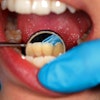The spending bill passed by the U.S. House of Representatives last week increased spending on several dental care, oral health research, and residency training programs and departments through fiscal year 2015, according to an ADA News story.
The bill represents a bipartisan agreement to avoid a government shutdown. At press time, the bill had not yet been approved by the U.S. Senate or signed by President Obama.
The budget would influence many separate areas. The areas of growth are listed below.
| Areas of growth | |
| Agency, center, or program | Action |
| National Institute of Dental and Craniofacial Research (NIDCR) | Legislators approved a $3 million increase to $399.9 million for the NIDCR whose mission is to improve dental, oral, and craniofacial health through research, research training, and the dissemination of health information. Report language accompanying the appropriations bill cites a decline in caries rates for most Americans but disparities among some population groups and encourages the NIDCR to explore more opportunities related to caries research. |
| Centers for Disease Control and Prevention (CDC) | The bill includes a $6 million increase to $216 million to expand the CDC's media campaign Tips From Former Smokers. |
| Health Resources and Services Administration (HRSA) | Lawmakers approved a $1.9 million increase to $38.9 million for oral health training programs with $9 million set aside for general dentistry residencies, a $1 million increase, and $10 million for pediatric dental residencies, a $2 million increase. Research shows that these residencies increase access to oral health services for underserved and vulnerable populations. |
| Indian Health Service (IHS) | The dental account received $174 million, an $8.7 million increase. |
The following programs or departments had their funding maintained in the bill.
| Areas of maintained funding | |
| Agency, center, or program | Action |
| Centers for Disease Control and Prevention (CDC) | Funding for the CDC's Division of Oral Health program, which helps states improve their oral health programs, encourages the use of fluoride products and community water fluoridation, and promotes school-based and linked dental sealant programs, is set at $15.7 million, virtually unchanged from the fiscal year (FY) 2014 level. |
| Children's Graduate Medical Education (GME) | Congress approved $265 million, the same as the FY 2014. Direct GME payments cover a portion of the cost of resident stipends and expenses, and indirect medical education payments cover additional costs associated with training. GME payments are also available to help train dental residents. |
| Area Health Education Centers (AHEC) | Congress restored funding at the FY 2014 level of $30.3 million. The centers support academic-community partnerships toward improving distribution, diversity, and supply of the primary care health professions workforce serving in rural and underserved areas. |
| Ryan White AIDS dental services | Funding will continue at the FY 2014 level of $13.1 million. The dental reimbursement and community-based dental partnership programs provide oral healthcare for people with HIV. |
| Military dental research | Funding will continue at $6 million. Military research units address dental disease and craniomaxillofacial battle injuries. The research detachment includes Army, Navy and Air Force officers in oral and maxillofacial surgery, periodontal surgery, plastic surgery, comprehensive dentistry, dental materials science and engineering, dental epidemiology, dental infectious disease, and dental public health. |



















